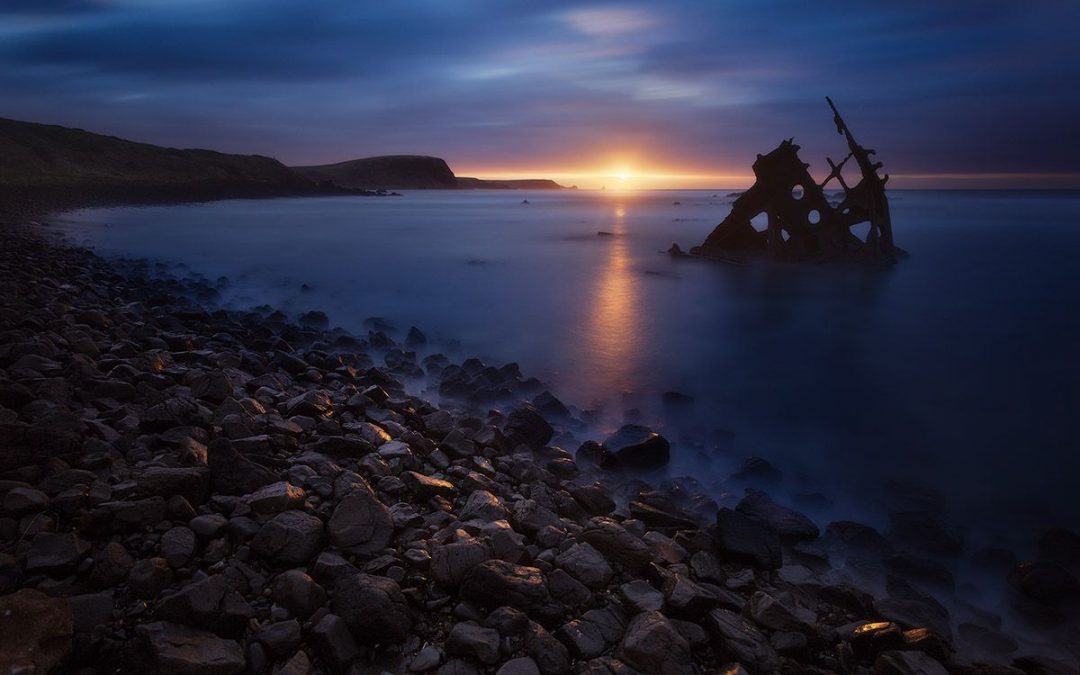Yesterday I wrote about those rare, stunning sunrises where the intensity and colour build and build until the tipping point where the conditions climax, then in a flash, the colour and light is gone.
Now on the flip side you get those mornings where it’s cold, wet, dark, windy, and it feels like the sunrise won’t happen at all.
Like on the morning I took this shot.
It's of the Speke Wreck on Philip Island in Victoria (Australia).
It was a fantastic surprise to come across it too. Normally when we’re travelling somewhere new we will research some popular spots on Flickr and plan our itinerary around shooting them (then if we revisit, spend a bit more time exploring next time).
But we’d not seen any pictures of this shipwreck during our research and only found out about it from the tourist information centre when we asked them (on a long-shot) if there were any shipwrecks around.
When they told us how to get here, we debated whether it would be any good for photography because if it was, then why hadn’t we seen any photos of it?
The tourist info people told us we’d need a low tide to see it best (and maybe to access it too, I can’t remember) and there was a low tide the next day… So we went and scoped it out to see if it was worth waking up in the morning for.
After a bit of a drive and a hike, we arrived. The clincher for me was when I looked up the sunrise direction on the Photographers Ephemeris and saw that it would come up right between the distant headland and the wreck.
(there’s my tip of the day right there – when researching new locations always check out the Photographers Ephemeris to see where the sun rises and falls! It really can make or break a shot! These days I use an iPhone app called PhotoPills too)
So fast-forward to the next morning, the sun was minutes away from rising and the conditions were awful. But I set up my tripod in position anyway and just crossed my fingers!
Luckily enough, a tiny gap in the clouds emerged right on cue… A gap so thin the sun could only shine through it for about 2 to 3 minutes before it disappeared again, but long enough for me to capture this 120-second exposure, plus two more bracketed exposures for the bright detail around the sun.
Even though the finished image is very dark, it was still a challenge blending in the detail around the sun from the other exposures. Without those, that part of the sky would have been very overexposed and not had quite the same effect it does now.
Also, I made a point of highlighting the golden light on the foreground rocks (again using luminosity masks) for general foreground interest, but also to create that visual anchor (like how I mentioned in an email a couple of weeks ago if you received that).
Given that I’m normally one to go for the bright, vibrant sunrise and sunset images, this dark moody one turned out to be one of my favourites from this trip.
So really 3 lessons here. 1, use the Photographers Ephemeris. 2, even when you think the weather isn’t going to cooperate, shoot anyway because you might get lucky for a few minutes.
and 3. if you want to learn the Photoshop techniques that help me bring the best out of every landscape photo I process…
Talk soon
Steve


